OnePlus 13
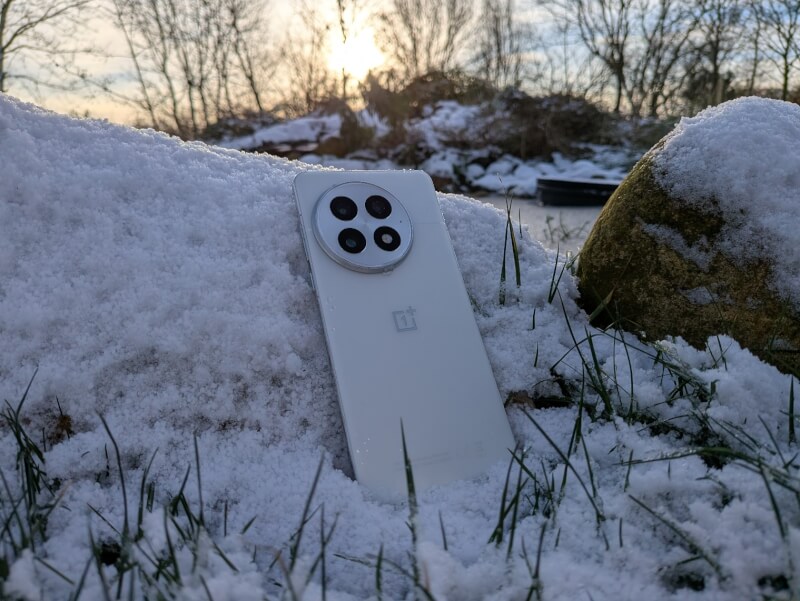
Central Specifications
- Chipset : Snapdragon 8 Elite
- GPU: Adreno
- NPU: Hexagon NPU
- Cooling: Dual Cryo-velocity VC cooling
- Battery: 6000mAh
- Charging: 100W with cable and 50W Wireless
- Display: 6.82” ProXDR QHD+ (3168x1400) at 120Hz
- Camera: Hasselblad camera system, Wide, Ultra Wide and telephoto
- RAM: 12GB or 16GB
- Storage: 256GB or 512GB
- Weight: 213 grams
- Thickness: 8.5 mm
- OS: Android with OxygenOS 15
On paper, OnePlus has packed in a lot of good stuff in the OnePlus 13 with a super solid chipset, huge battery, fast charging and of course a continuation of their camera collaboration with Hasselblad.
The OnePlus 13 comes in two variants in terms of RAM and storage. The small one has 12 GB of RAM and 256 GB of storage, while the large one comes with 16 GB of RAM and 512 GB of storage. We have had a visit from the large variant.
A tour around the OnePlus 13
OnePlus hasn't really changed much with the OnePlus 13 compared to the previous generation. The style is vaguely reminiscent of what we've seen on both the OnePlus 11 and OnePlus 12.
That's not necessarily a bad thing, because personally I think OnePlus has created a beautiful phone, and I think so too with the newest member of the family.
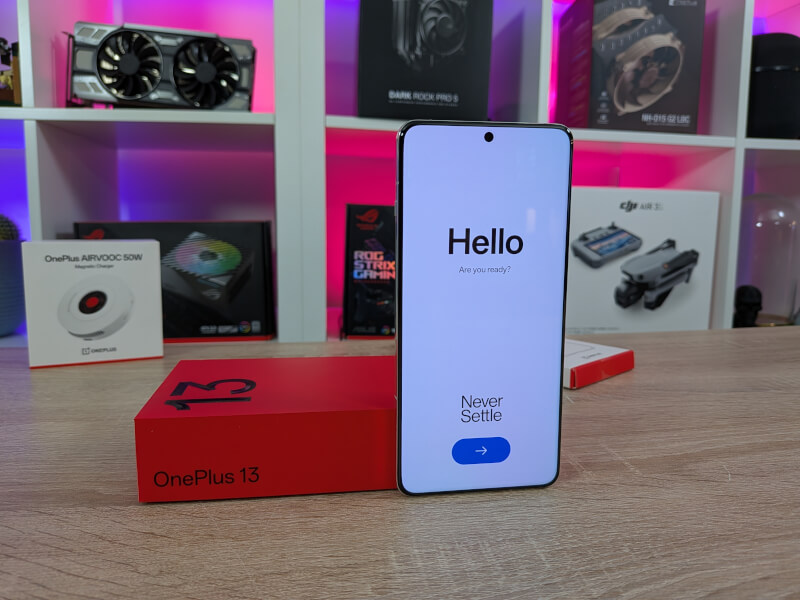
The phone is available this year in three colors, which are the white Arctic Dawn, which we have visited, and then a Black Eclipse and a Midnight Ocean. Arctic Dawn and Black Eclipse are the classic black and white variants with a back in beautiful sandblasted glass, while Midnight Ocean is a dark blue version, where the back is covered in microfiber Vegan Leather.
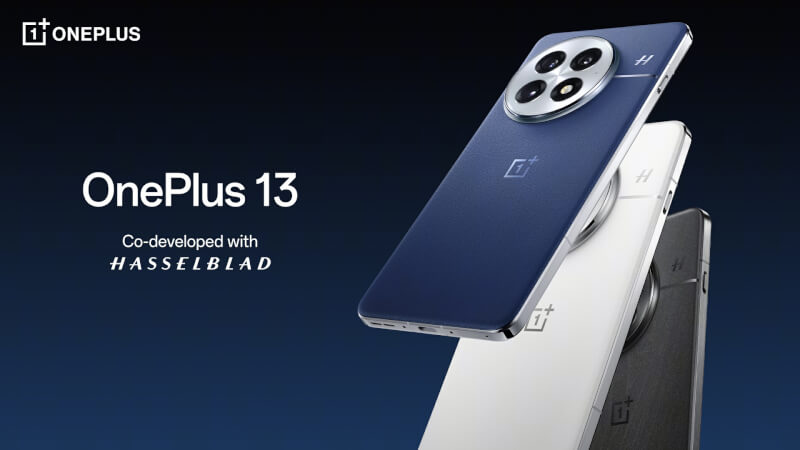
This means that the Midnight Ocean version is three grams lighter but 0.4mm thicker. A minimal difference that you probably won't notice much. So it will be the back texture that is the big difference.
As I said, we've been visited by the white variant, and I still think OnePlus makes some of the most pleasant textures on the back of their flagship phones. The sandblasted glass surface is super nice to the touch.
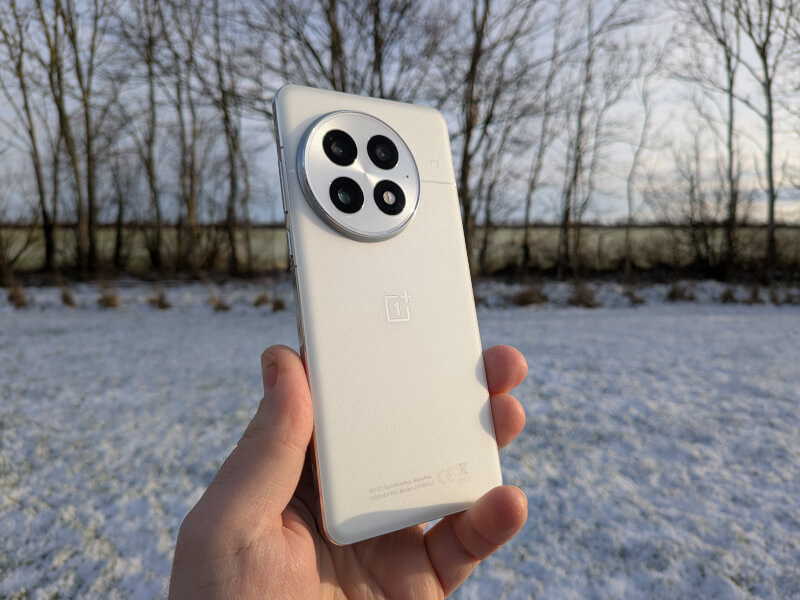
Otherwise, the back is still characterized by the round camera bump with a wide, Ultra-wide and telephoto setup, which was made in collaboration with Hasselblad.
A large part of OnePlus' marketing revolves around this collaboration, and I'll go into more detail about it in a separate chapter.
The sides of the phone are glossy aluminum, which looks really nice and shiny, but I personally would have preferred OnePlus to have kept the sandblasted style here. A matte finish is simply easier to maintain in the long run, and it's not quite as slippery. However, it's a minor detail that will probably also depend on personal preference.
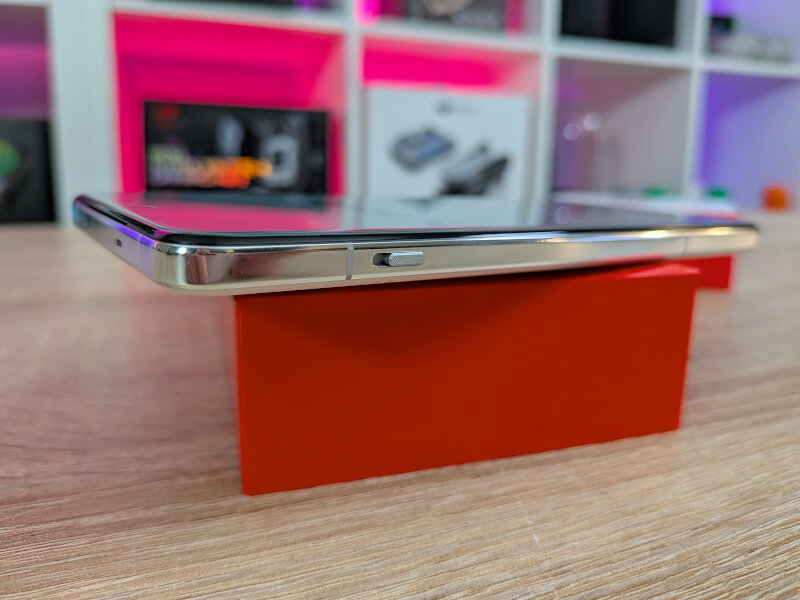
I'm glad that OnePlus has made the sides flatter, and not quite as rounded as the OnePlus 12. Again, it's a bit of a personal preference, but I think the phone becomes easier to hold.
We still have the power and volume buttons located on the right side of the phone, while the OnePlus Alert Slider has the left side to itself.
The SIM card and USB C connector can be found at the bottom of the phone. The OnePlus 13 is equipped with a large 6000 mAh battery, and you can charge it with up to 100W via the included USB C cable.
However, in modern style, there is no charger included in the box, so you have to purchase it separately.
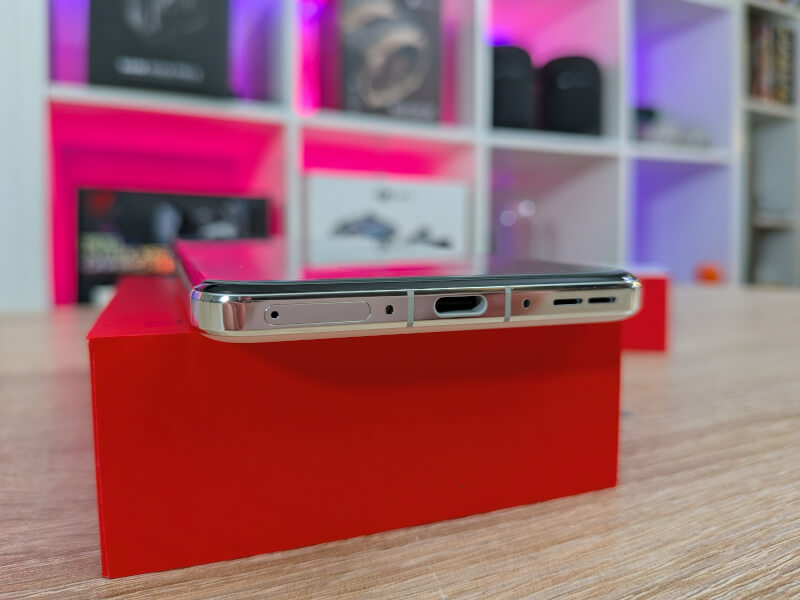
However, if you have the right charger, you can charge the large 6000 mAh battery from 0% to 100% in 36 minutes.
If you prefer wireless charging, that's also an option, and the OnePlus 13 supports up to 50W wireless charging via their AirVOOC wireless charger. It's a large, slightly unwieldy solution, though, and even has an active fan to get rid of the heat that 50W wireless charging generates.
It's impressively fast wireless charging, though. In comparison, the new Apple MagSafe standard has the ability to charge up to 25W wirelessly.
Speaking of MagSafe, OnePlus has seen Apple's back and has a number of magnetic accessories, similar to MagSafe. This includes their AirVOOC charger, but also their OnePlus Slim Magnetic Power Bank and a selection of cases.
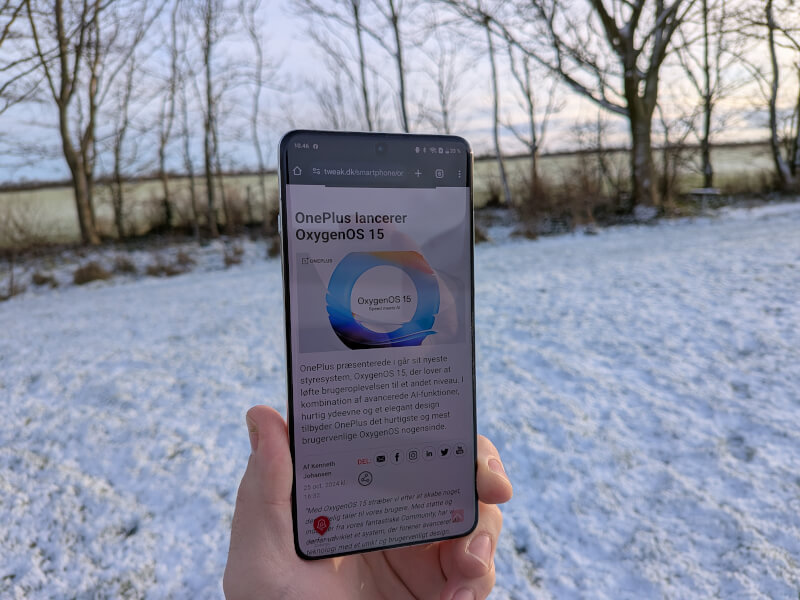
Moving on to the front, the focus is of course on the display. It's an LTPO AMOLED ProXDR Display with a QHD+ resolution of 3168x1440, with a refresh rate of up to 120 Hz.
It supports both Dolby Vision and HDR10+. It's a nice, clear and sharp screen with enough brightness for even bright sunlight. OnePlus states a typical brightness of around 800 nits, but with the option of 1600 nits in High Brightness Mode and a Peak Brightness of up to 4500 nits.
The surface is protected by a Crystal Shield super-ceramic glass, and comes with a pre-mounted screen protector.
The flat style continues here and I'm happy to see that OnePlus has finally gone with a completely flat display. The glass is still slightly rounded around the edges, but the display itself is flat.
The fingerprint reader is located under the screen and has a sensible placement. It is a super fast ultrasonic sensor.
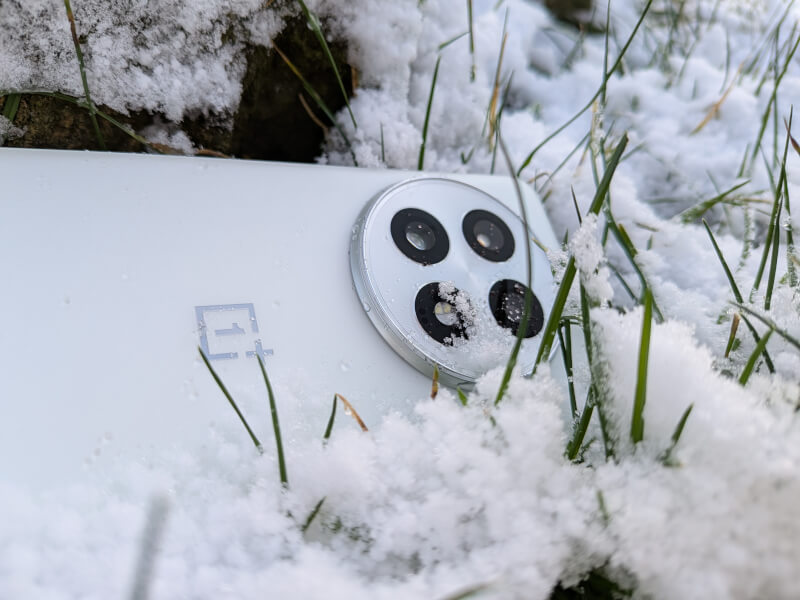
It's all wrapped in a robust shell that comes with both an IP68 and IP69 rating, so you're well protected against the normal challenges of everyday water. Always nice to have it in place when you live in a humid climate like us.
Software
We are of course dealing with an Android phone. We are updated to the latest Android 15, with all the great functionality it brings.
On top of that, OnePlus has added their OxygenOS, which is currently on version 15. It's a relatively subdued Android skin that doesn't fill the phone with a lot of extra apps. There's a bit in the form of OnePlus' own OnePlus Store, a notes app, and a OnePlus Community app. In addition, there's a PhoneClone app that can be used if you want to transfer data from an older phone to your new OnePlus.
Under the surface, however, OnePlus has packed a lot of functionality into the software. Much of it is about customizing the phone to your exact preferences. This applies to both the appearance, but also things like navigation, battery or shortcuts can be customized in a multitude of different ways.
There's really a lot to dive into, and for someone like me who likes to have those kinds of options, it's great to see that I can determine the size of UI elements, app grid, animations, colors, etc.
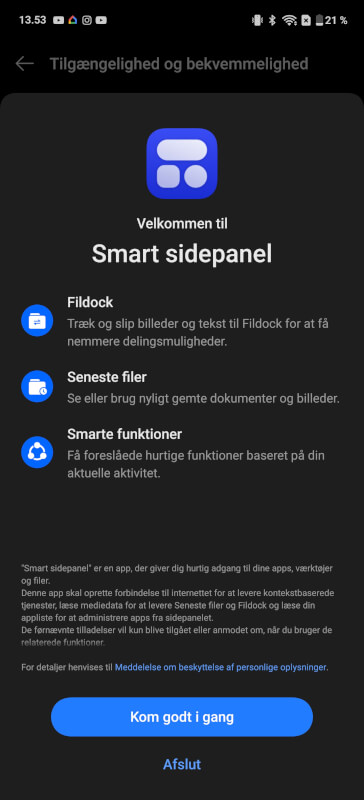
We also still find options like Smart Side Panel, which gives you the option to have an extra panel with extra shortcuts or functions that is always available no matter which app you are in.
In general, there are quite a lot of customization options in OxygenOS.
Camera
The camera system on the OnePlus 13 is clearly the most talked about marketing from OnePlus.
The collaboration with Hasselblad continues, and as before, it is primarily in the software that this becomes clear. Hasselblad hardware is large and expensive and for natural reasons it cannot be squeezed down to smartphone size.
The camera system on the OnePlus 13 consists of a Wide, an Ultra-Wide and a telephoto lens, all three of 50 megapixels.
The telephoto lens only has 3x optical zoom, but can digitally zoom up to 120x. At that crazy level of zoom, of course, a lot of software/AI magic comes into play to produce usable images.
The front camera is a little more limited with a 32-megapixel Sony IMX615 sensor.
Despite the big marketing push that has been around the cameras on the OnePlus 13, I haven't been completely blown away. Not as much as you would expect from the many big words from OnePlus itself.
That said, my time with the OnePlus 13 and its camera setup has been generally good. There are some areas where OnePlus takes super good photos, and then there are others where it falls a little short.

My starting point has primarily been as a point and shoot user, as that will be the way most people use their smartphone camera.
When the lighting is reasonable and the subject is relatively still, the OnePlus 13 takes fantastic photos. There is a good level of detail and on the default setting I think the color representation is really nice.

It also takes good portrait photos with a good blur of the background, which doesn't stick out too much, even around hair etc. All on the main camera though.
If you switch to the selfie camera on the front, I think the OnePlus 13 has a few more challenges with both getting a completely sharp image, but the blur effect on portrait photos also falls a bit short.

As we have seen before, the collaboration between OnePlus and Hasselblad is not exactly super obvious. As we have seen before, this is reflected in the XPAN format, which now comes in three versions.
On top of that, there are a few Master filters that can be used to spice up your photos and videos.
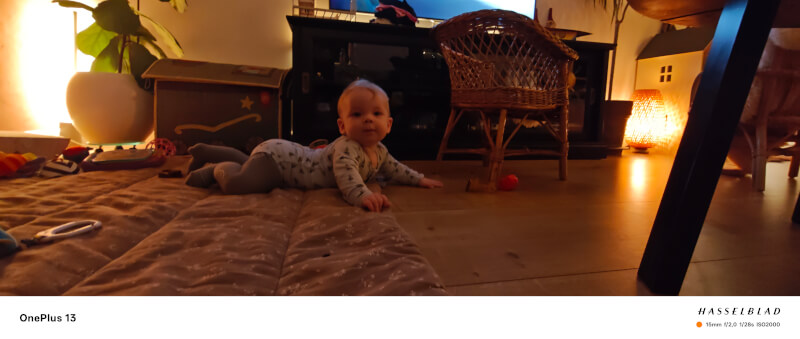
One area where the OnePlus 13 impressed me was its zoom functionality. As mentioned, there is only an optical zoom option up to 3x, but via digital zoom the OnePlus 13 allows for up to an almost stalker-like level of 120x.
However, this means that a lot of AI processing is needed to get anything useful out of the images. Although I very rarely find myself in situations where 120x zoom is something I need, I was still impressed with the results during my test.
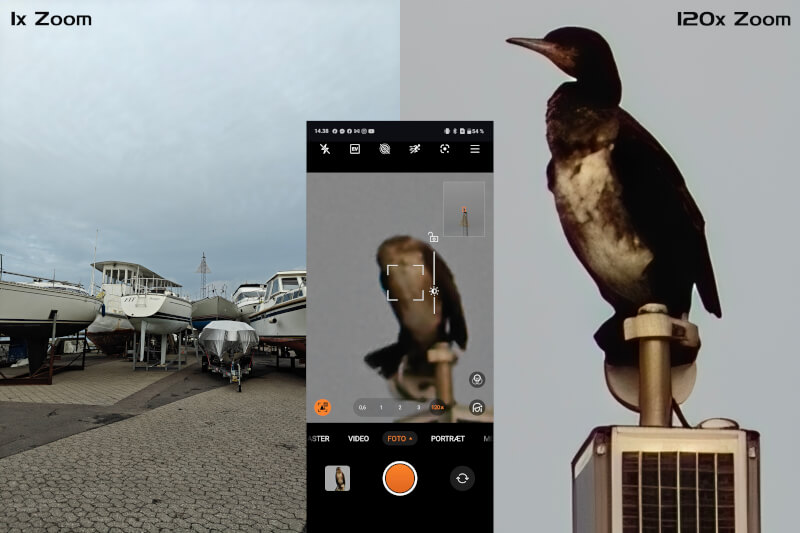
I took several photos zoomed in all the way to 120x, and while the image on the screen looked like a woolly mess, the software managed to deliver a usable image. However, it was a bit of a challenge to get it to lock onto the subject I wanted to take a photo of if it was handheld.
On the video front, the OnePlus 12 also performs respectably, with the ability to record up to 8K at 30 FPS. Personally, 4K at 60 FPS was my preferred level.
If you want to use the Ultra Steady stabilization on video, you can now record up to 4K at 60 FPS. Previously, it was only up to 1080p at 60 FPS. It's still a super solid stabilization you get out of the OnePlus 13, so a run and various action shots are no problem here. However, there is a certain delay between your movements and what you see on the screen when Ultra Steady stabilization is used.
See test images in full resolution here.
Test
I've been using the OnePlus 13 for a few weeks leading up to its launch as my primary phone. Starting up a new phone has become an easy process. I managed it via an online backup on my Google profile.
It's clear that the OnePlus 13 is a flagship phone. The solid combination of the powerful Snapdragon 8 Elite chipset and 16GB of RAM means you get a super fast phone that can easily chew through anything you throw at it.
OnePlus has also gradually gotten a good handle on their OxygenOS, so this, combined with the fast hardware, means that during my test I have not experienced any challenges with any of the tasks I have set it.
If you compare it to other models on the market, such as Apple's top model A18 Pro or Google's Tensor, the Snapdragon 8 Elite comes in really well. Apple has a slight advantage on the single Core front, while the Snapdragon 8 Elite beats everyone else solidly on multicore performance.
In gaming performance, the Snapdragon 8 Elite also hits hard, and I haven't been able to find any games that the OnePlus 13 hasn't ridden through without any problems.
So there is more than ample performance and I would even dare to say that it is overkill for the vast majority of smartphone users. For everyday things like social media, internet browsing and gaming, you will not experience any problems.
I would like to remind you that I tested the larger variant with 16 GB of RAM. Performance may vary between it and the smaller version with 12 GB of RAM. However, I don't imagine that this will be something most people will notice in normal daily use.
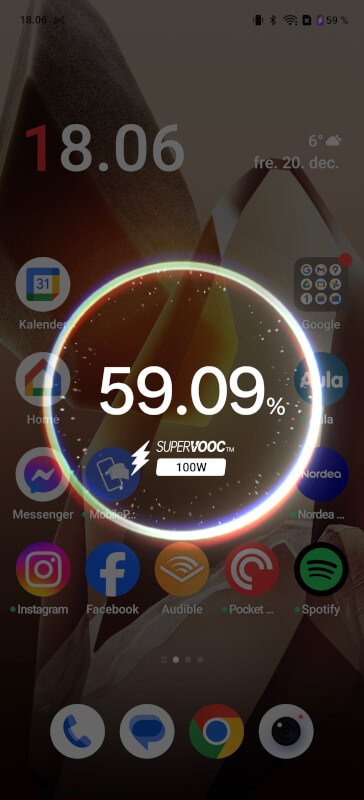
One of the things I've repeatedly praised when it comes to OnePlus phones is their battery and charging. That's a point that doesn't change on the OnePlus 13. The large battery combined with the ability to charge super fast means that I've never thought about the battery at any point.
I have been able to stretch the battery to two days without any major problems, and when you can go from 0% to 100% with the right charger in just over half an hour, you don't have to worry too much about the battery.
Just keep in mind that there is currently no charger included in the box for the OnePlus 13. So if you want to be able to take advantage of the full 100W charging, you will have to buy a charger for yourself.
Price
OnePlus 13 hits stores today, January 7, 2025. In Denmark, the price for OnePlus 13 starts at 1.200$ for the 12/256GB variant, while the 16/512GB variant costs 1.500$.
Conclusion
With the OnePlus 13, OnePlus has made another super solid phone, which comes to the market with the latest hardware and thus also some of the best performance you can currently find.
It is one of the first phones on the market with the new Snapdragon 8 Elite chipset.
This combined with the super solid battery and lightning-fast charging means you get a phone that can eat through everything you throw at it, and last a long time before it screams for a charger.
When you finally need a charger, the option for 100W charging means you only need to be plugged in for a short period of time.
I don't think the OnePlus 13 quite lives up to the big promises OnePlus makes in terms of camera and images. That said, it's probably more because OnePlus wants to speak highly of itself, and not because the camera setup is actually bad.
On the contrary, it is super solid and takes good pictures and sharp video with good contrast and color representation.
The price is on the high side, but it beats, for example, the Google Pixel 9 Pro XL and does so with significantly more powerful hardware, a larger battery and faster charging, so not everything is completely wrong.
We end up with a final score of 8, for a super solid phone that builds on the development OnePlus is currently undergoing. Clearly the best phone I have experienced from OnePlus to date, but which still lacks a bit in terms of camera to be able to beat other flagship models.
Advantages
- Super powerful mobile hardware
- Lots of battery
- Fast charging (with the right charger)
Disadvantages
- The camera doesn't quite live up to the sky-high expectations that OnePlus itself has built up.

Latest smartphone
-
18 Febsmartphone
-
07 Jansmartphone
OnePlus 13
-
03 Decsmartphone
OnePlus 13 will launch globally in January 2025
-
25 Octsmartphone
OnePlus launches OxygenOS 15
-
17 Octsmartphone
OxygenOS 15 goes live on October 24
-
20 Sepsmartphone
Apple can be forced to open Siri
-
10 Sepsmartphone
A18 Pro chip in iPhone 16 Pro is 15 percent faster
-
10 Sepsmartphone
Apple's event brought lots of news.
Most read smartphone
Latest smartphone
-
18 Febsmartphone
OnePlus Watch 3 now hits stores
-
07 Jansmartphone
OnePlus 13
-
03 Decsmartphone
OnePlus 13 will launch globally in January 2025
-
25 Octsmartphone
OnePlus launches OxygenOS 15
-
17 Octsmartphone
OxygenOS 15 goes live on October 24
-
20 Sepsmartphone
Apple can be forced to open Siri
-
10 Sepsmartphone
A18 Pro chip in iPhone 16 Pro is 15 percent faster
-
10 Sepsmartphone
Apple's event brought lots of news.






